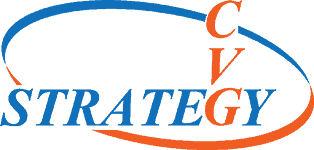
Mechanical Vibrations of Shipboard Equipment, MIL-STD-810, Method 528 is performed to meet U.S. Navy requirements for environmental and internally excited vibration of equipment designed for installation aboard navy ships. These vibration tests were derived from MIL-STD-167 and was added along with lessons learned to MIL-STD-810 in Revision G.
As with other testing for Naval requirements, this testing is normally performed as designated in the method. Any tailoring of test procedures must be approved by the the acceptance authority. The term tailoring, as used in MIL-STD-810, is the process of selecting and altering design test characteristics, and tolerances, to account for environmental stresses expected in the life cycle of the equipment to be evaluated.
Procedures for Shipboard Vibration
Procedure I (Type I) – Environmental Vibration
Procedure I is used to simulate exposure to vibration caused by conventional shafted propeller propulsion. Testing can be tailored for shipboard equipment subjected to nonconventional propulsor types such as waterjet or podded propulsors.
For this procedure, the Unit Under Test (UUT) is to be secured to the test machine using the same points or areas of attachment as intended for securing it shipboard. The UUT should be mounted in the orientation of intended use. Equipment must be tested in its operational modes.
Testing is performed in three phases. The first phase is an exploratory test to determine the presence of response prominences or resonances in the UUT. Testing may be performed in 1 Hz intervals for the range of 4 Hz to 33 Hz or swept frequency of the same range if the rate of sweep does not exceed. 0.067 Hz/second.
This testing is performed on three axis and any prominences are to be recorded. These prominences will be considered to as frequencies for the third phase of testing, endurance.
The second phase of testing for procedure I is a variable frequency test in which the UUT is subjected to vibration of increased amplitudes for five minutes at each integral frequency. Special consideration for frequency range is provided for equipment intended for a single type of ship. As with the previous testing, prominences are recorded for consideration for endurance testing.
Endurance testing is then performed for the most prominent resonances noted in previous testing. At a minimum this testing is to have a total time of 2 hours. Test duration is based on the number of prominences.
If no prominences were noted the test is to be performed at 33 Hz or the highest specified frequency. Increased vibratory displacements are required for mast mounted equipment.
Procedure II (Type II) – Internally Excited Vibration
MIL-STD-810 Method 528, Procedure II is applicable to rotating machinery and is performed to minimize vibrations caused by the equipment. It is also performed to reduce bearing wear and noise. The testing places limitations on the vibration output of the equipment and the deflection of rotors. This testing is important to prevent mechanical failures of adjacent structures and equipment and prevent health effects of Whole Body Vibration (WBV).
Detailed Environmental Test Plan Templates
CVG Strategy offers EZ Test Plan Templates for MIL-STD environmental (climatic/dynamic) and EMI/EMC test documentation. Our Detailed Environmental Test Plans (DETP)s are written as specified in Department of Defense standard MIL-STD-810 Task 405. They are available for specific applications such as Ground Mobile, Ground Stationary, and Shipboard Controlled, Shipboard Uncontrolled, and Aircraft Military.
These DETPs include appropriate methods, (such as Mechanical Vibrations of Shipboard Equipment MIL-STD-810 Method 528) addendums for product specific information, test labels for photo identification and data sheets for collection of required data. Profile (LCEP).
Our Electromagnetic Interference Test Plans are written as specified in MIL-STD-461. They contain the test methodology, addendums for product specific information, test labels for photo identification and data sheets. These plans are available for procedures listed in MIL-STD-461 and are also available for MIL-STD-1275, MIL-STD-704, and MIL-STD-1399-300.
Custom Test Plans are also available for applications not covered in the EZ Test Plan offerings. These plans can be written for any number of applications and their relevant standards.
MIL-STD-810 Training Classes
CVG Strategy MIL-STD-810 classes will provide you with the ability to develop and conduct an environmental test program. Our two-day course not only provides you with valuable information about climatic and dynamic test methods but also includes training in the methodology to correctly apply test tailoring relevant to the test item’s expected life cycle.
This course is available online or onsite. Ample time is available for questions and comments so that participants are encouraged to keep engaged. Check here for our online Training Registration Schedule.


